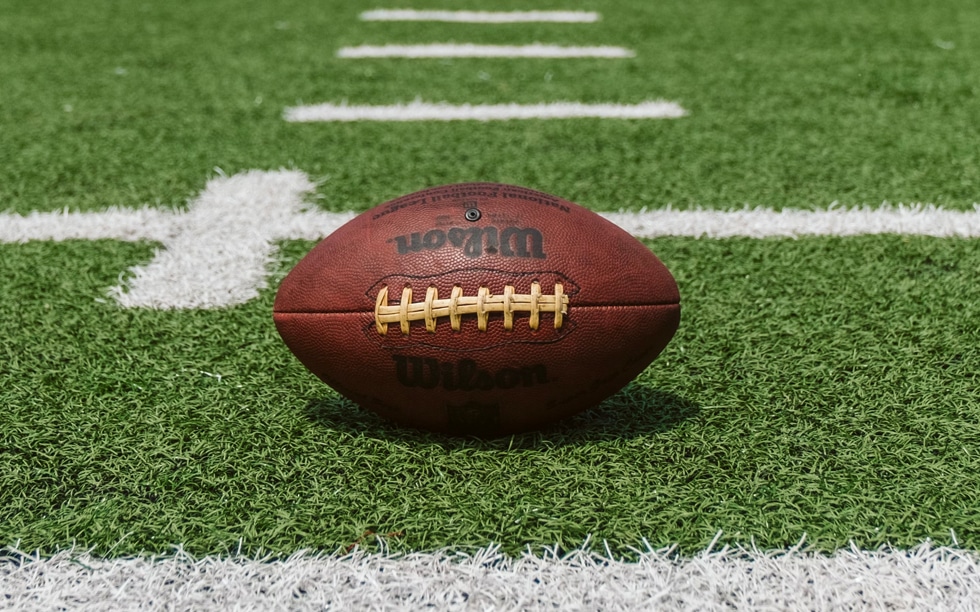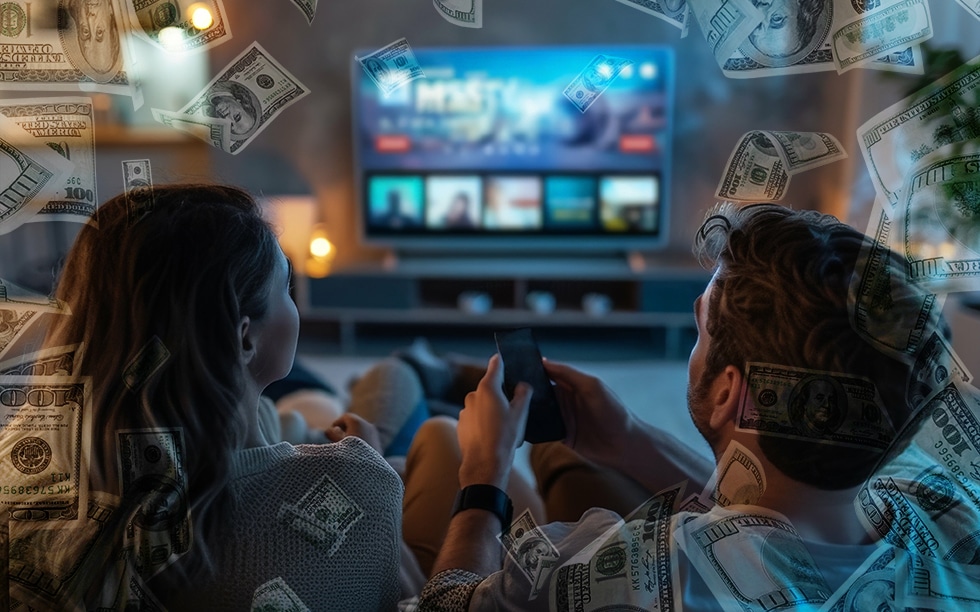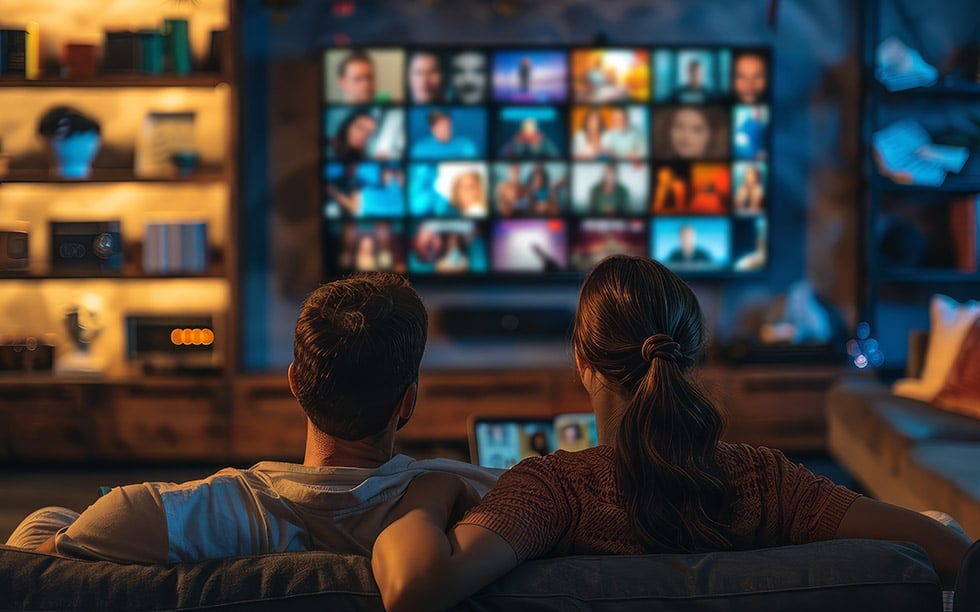Nov 29, 2022
—
In March 2021, Amazon secured a 10-year deal with the NFL to exclusively broadcast 15 Thursday Night Football games and one pre-season game every year on their streaming service Prime Video and live streaming service Twitch—a moment of success parallel to lifting the Lombardi Trophy. According to AdAge, Amazon expects around 12.5m people across the…

In March 2021, Amazon secured a 10-year deal with the NFL to exclusively broadcast 15 Thursday Night Football games and one pre-season game every year on their streaming service Prime Video and live streaming service Twitch—a moment of success parallel to lifting the Lombardi Trophy.
According to AdAge, Amazon expects around 12.5m people across the U.S. to tune in every Thursday night.
This deal is the NFL’s first partnership with an all-digital platform—marking a historical change in television media buying advertising.
After calling Fox home for the last four years, Thursday Night Football is set to bring a revolution in the sports streaming sector. This change may take some adjusting for an audience spanning multiple demographics and age groups who have already put in a lifetime of viewing America’s games.
But for Jeff Bezos’ e-commerce giant, this switch to streaming offers an advertising and sales business model never seen before.
With this deal, Amazon now offers advertisers a trifecta of benefits with the ability to reach a wide audience with quality and measurement capabilities no other platform can offer. According to Nielsen, the NFL drew 17.1m sets of eyes on average for each regular season game in 2021. This number of viewers will allow Amazon to fill in existing gaps in their advertising portfolio that still rely heavily on targeting customers in the moments right before purchasing.
Amazon will now be able to provide advertisers with purchasing metrics on behavioral information and sales at crucial television viewing moments. For example, Amazon can now offer NFL partner Gillette valuable information about the number of products they sell on the Amazon store when Gillette ads are played during Thursday Night Football.
This type of access to detailed metrics is one of the many reasons why sports leagues across the globe are trending toward streaming platforms.
Between Prime Video, Peacock, ESPN+, Apple TV, and Paramount+—the battle for sports streaming rights rages on like The Greatest Game Ever Played. But this clash is handled in boardrooms instead of being fought in an icy Yankee Stadium.
While streaming’s business model was once the antithesis of live viewing, these global media giants are now poised to take over the live sports space in the coming years.
Streaming platforms are buying national sports leagues’ broadcast rights faster than initially imagined, and the amount they are willing to spend seems like an afterthought. In 2021, NBCU’s Peacock bought the exclusive rights to broadcast the WWE on their platform across the U.S. for $1b.
Apple paid $2.5b for a global partnership, with the MLS giving them the exclusive rights to broadcast every single MLS game on their streaming network.
Additionally, the NBA’s television contract with Disney and Turner Sports is set to expire during the 2024-25 season—leaving another opportunity for streamers right around the corner. In fact, Amazon has long been cited as a potential bidder—and every week it defies expectations with TNF, that theory becomes more of a reality.
Along with Amazon’s new deal with the NFL, they have also signed a three-year contract with Nielsen to measure their audiences across Twitch and Prime Video during their stream of Thursday Night Football.
This allows Amazon to provide advertisers with the same data sets Nielsen uses for other league broadcasts—making the comparison for potential ad buyers much simpler. In addition to these metrics, advertisers will also have access to data from Amazon’s self-produced metrics that give insight into engagement, brand awareness, and sales.
By offering a combination of metrics, Amazon provides an elevated form of digital media buying that traditional media may soon be unable to compete with.
According to Yahoo Entertainment, Amazon’s new streaming deal with the NFL is all about collecting ad data. As part of their new agreement with the NFL, it’s reported that Amazon gets to sell two minutes of ads per hour. The ads are non-skippable and use a full-screen format. Amazon has already sold ad packages that cost $2.8m. As of now, it is still being determined how many minutes of ad space are included in each package.
But with this price tag comes Amazon’s ability to track sales data—allowing advertisers to know how many people purchased or looked up their product on Amazon after their ad aired.
With an audience as in tune with what they are watching as sports viewers, this kind of targeting offers excellent value.
In streaming or television marketing, there are few greater audiences than sports viewers. When you purchase advertising space during sporting events, you are providing consistent exposure to your product over a 2-4 hour period to an audience genuinely captivated by what they are watching.
Additionally, sports accounts for 34% of all viewing by adults between 18-49, according to ADU.
With such a high number of people watching attentively every week, advertisers can’t afford not to include sports marketing in their media buying plan.
According to Nielsen data, Amazon’s Thursday Night Football opener brought in 13m viewers on Prime Video and an additional 2.3m viewers on Twitch. That’s a whole lot of people that media planners can reach with their advertisements, especially because streaming offers more flexible viewing opportunities than traditional media. Prime Video gives NFL fans the ability to watch games from anywhere and everywhere on their smartphone—allowing advertisers to reach a larger and more diverse audience.
Since 2012, cable providers have lost 25m subscribers, according to Zippia. And with the NFL routinely dominating ratings—there have been 15.355m viewers in week one of the 2022 season alone. The ability to market to cord-cutting NFL fans on Prime Video is an advantage you can’t do without in your media plan.
Like most CTV platforms, Prime Video gives advertisers access to in-depth analyses of audience behaviors. From what products they have on their Amazon Watchlist to what shows they recently watched on Prime Video, Thursday Night Football on Amazon gives advertisers unique insights they can use in their media planning strategy and leverage in future marketing decisions.
For example, recent data from Amazon Ads shows that Thursday Night Football viewers were interested in product categories such as home improvement, sport-related merchandise, toys, groceries, and pet products. Amazon Ads data also showed that their audience is 55% male, with 25% percent of viewers being between 25-54 years old.
Access to this level of information allows advertisers to create targeted ads that reach and resonate with valuable audiences, especially ones that are difficult to reach otherwise.
Prime Video allows advertisers to track sales data in new ways—giving them access to in-the-moment buying habits. By tracking viewers’ sales data, advertisers have the opportunity to market to them for specific products they know they are interested in—ultimately driving more desired outcomes among key consumers.
At Digital Remedy, our team of digital advertising experts is committed to media buying excellence and unparalleled client service. We offer fully managed service, including a seamless media process to deliver operational efficiencies, access to premium inventory sources, and a closed loop, full-funnel attribution solution—eliminating the stress of managing the complex elements of media buying and planning.
Our Flip platform can help you to buy, manage, optimize, and measure your OTT campaigns—whether for Thursday Night Football or the latest Hulu original series.
Through our strategic partnership with Amazon, Digital Remedy allows advertisers and agencies to:
For the latest updates regarding our media offerings and partnerships, follow us on Facebook, Twitter, and Instagram.
Now is the perfect time to be one of the early adopters of this largely untapped advertising platform. Take your OTT campaigns to the next level with Digital Remedy.
Related Posts

As new tariffs increase economic uncertainty, advertisers are under intense pressure to stretch their budgets and prove the value.

The way people consume television has changed dramatically. With audiences shifting away from traditional cable and toward streaming services,.

Staying ahead as a full-service digital marketing agency is no small feat. Between evolving consumer behaviors, rising client expectations,.